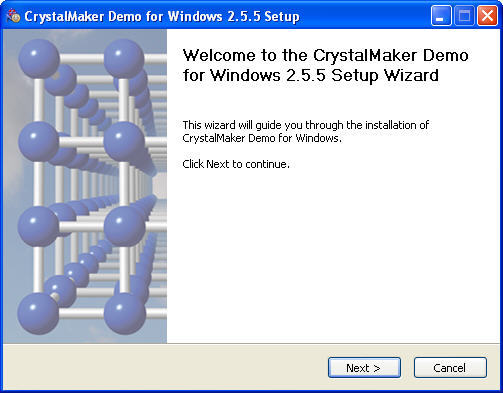

- #VIEWING MULTIPLE UNIT CELLS IN CRYSTALMAKER CRACK#
- #VIEWING MULTIPLE UNIT CELLS IN CRYSTALMAKER WINDOWS#
When a solid forms, such as when ( as Carl Sagan might say) billions and billions of molecules come together to form a crystal, the molecules usually make up their own minds about how they want to arrange themselves, and they do so in ways that are often difficult to predict or control. This, until recently, has been extremely difficult. It is therefore vital, if one is trying to design new materials, to be able to control the way the molecules are arranged.
#VIEWING MULTIPLE UNIT CELLS IN CRYSTALMAKER CRACK#
The properties of materials, diverse things as whether they dissolve, whether the conduct electricity, whether they flex or crack under pressure, or even their colour, are very dependent on how the molecules are arranged within them. Image made using the Diamond Visualisation software. This happens with a large increase of the crystal’s volume, and the penetration of the fluid inside the framework of these new structures! With some simple fluids, such as water and methanol, compression can lead to other structures from the family of four-connected nets. In 2013, it was shown that the behavior at high pressure (a few gigapascal) depends on the nature of the fluid used for compression. Moreover, these net have a very familiar motif: they have the same structure as diamond! (with Zn taking the place of carbon, and C–C bonds being replaced by Zn–C–N–Zn linkage).Īnd there is more! Though the structure at ambient conditions described above has been known since 1945, the behavior of zinc cyanide under pressure remained a mystery until very recently. You can see it on the picture above, where one of the framework has been colored in yellow, while the other one is purple (Zn) and black (C and N). two three-dimensional frameworks with no bonds between them, but “interlocked” within each other. Zeolitic materials (previously featured here!) are a very wide family of such structures, with 216 different frameworks known to date.įrom this infinite array of possible structure, zinc cyanide adopts a particularly interesting one. This is a geometry common to many crystals, though the results show endless variety: mathematically, there is an infinite number of ways to arrange such tetrahedra in space, called four-connected nets. In zinc cyanide, or Zn(CN)2, each zinc is surrounded by four cyanide ligands, linking it to neighboring zinc atoms. Not very exciting… Indeed, its beauty comes not from its uses, but from the crystallographic structure itself.

Zinc cyanide is used for electroplating of zinc, and as a catalyst for a few reactions in organic chemistry. They have, on the other hand, relatively low stability under pressure. Like many members of the ZIF family, ZIF-8 is a very robust material compared to other metal-organic frameworks, with good chemical and thermal stability (up to 550☌). These cages are packed together to form the “sodalite” (or SOD) framework, from the name of the mineral where this topology was first encountered.
#VIEWING MULTIPLE UNIT CELLS IN CRYSTALMAKER WINDOWS#
The Zn(imidazolate)4 tetrahedra are organized together to form cages (called “sodalite cages”) with 8 hexagonal windows and 6 square windows. ZIF-8, the member of the family depicted above, has been one of the most studied. For these reasons, the ZIFs are the largest family of metal-organic frameworks known to date, with more than 100 different topologies synthesized experimentally, and many more predicted from quantum chemistry calculations. ZIFs couple this extremely wide structural variability with the possibility to feature functionalized imidazolate linkers (present in metal-organic frameworks in general). This tetrahedral arrangement is equivalent to the zeolite structures, inorganic porous structures that have wide industrial applications, with more than 200 framework geometries known to date.

Zeolitic imidazolate frameworks (ZIFs) are a family of metal–organic frameworks, consisting of imidazolate linkers bridging metal centers with tetrahedral coordination (Zn, Co, Cd, Li, B, …). Picture generated with CrystalMaker ( ), from paper here: dx.doi.org/10.1039/c3cp54292k


 0 kommentar(er)
0 kommentar(er)
